Intuitive Note-Reading
Let’s learn and practice reading without even knowing the rules of notation. I call this Intuitive Note-Reading, or INR. In a nutshell, you learn reading tunes you’ve already learned by ear. You associate the notes you’re playing to the notes on the page. In this way, you naturally learn to read the patterns in sheet music.
The core practice is to alternate between just playing and playing while reading.
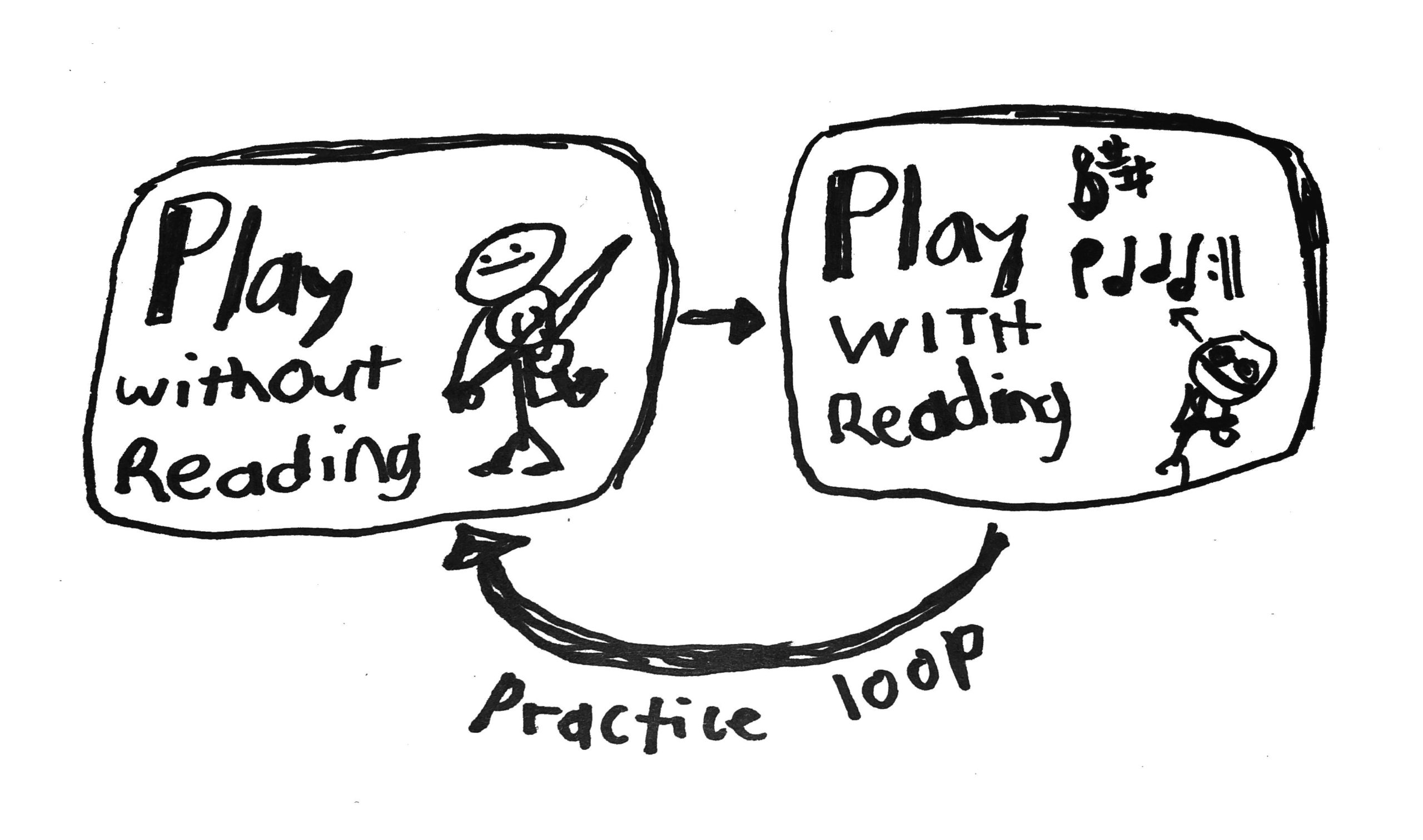
You are a reading machine!
Your brain is a natural reading machine. If you see a series of symbols and hear an audio track, you will naturally decipher the code, if it is simple enough.

If you listen to the track just once or twice, you will naturally figure out what sound goes with what symbol. You won’t need me to tell you or explain any rules.
In the same way, this is how we will learn to read music. If you start with small phrases from tunes and scales you already know, then you will naturally understand the written music, simply by learning to recognize patterns.
You will listen to and read repeating phrases with tabs and note names:
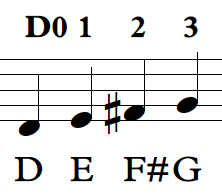
And then read them without note names:
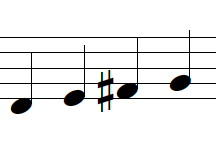
Later, after you’ve started to make friends with the notes, we’ll learn how the rules work. But at that point, you’ll be in a better position to understand a little bit of the naming conventions and theory.
First, learn to play
It’s extremely frustrating to learn reading and playing at the same time. So before learning to read, I encourage you to first learn to play your instrument and get a good (not perfect) sound.
- Be able to get a good sound.
- Be able to play G, D, A major scales.
- Learn at least twenty tunes using tabs, play-along tracks and video (or in-person) lessons.
- It’s important to do this first because you’ll start by learning to read tunes you already know.
Intuitive Note-Reading
Let’s learn the basic process of INR:
- Play a phrase without reading.
- Read it without playing.
- Play it while reading the sheet music snippet.
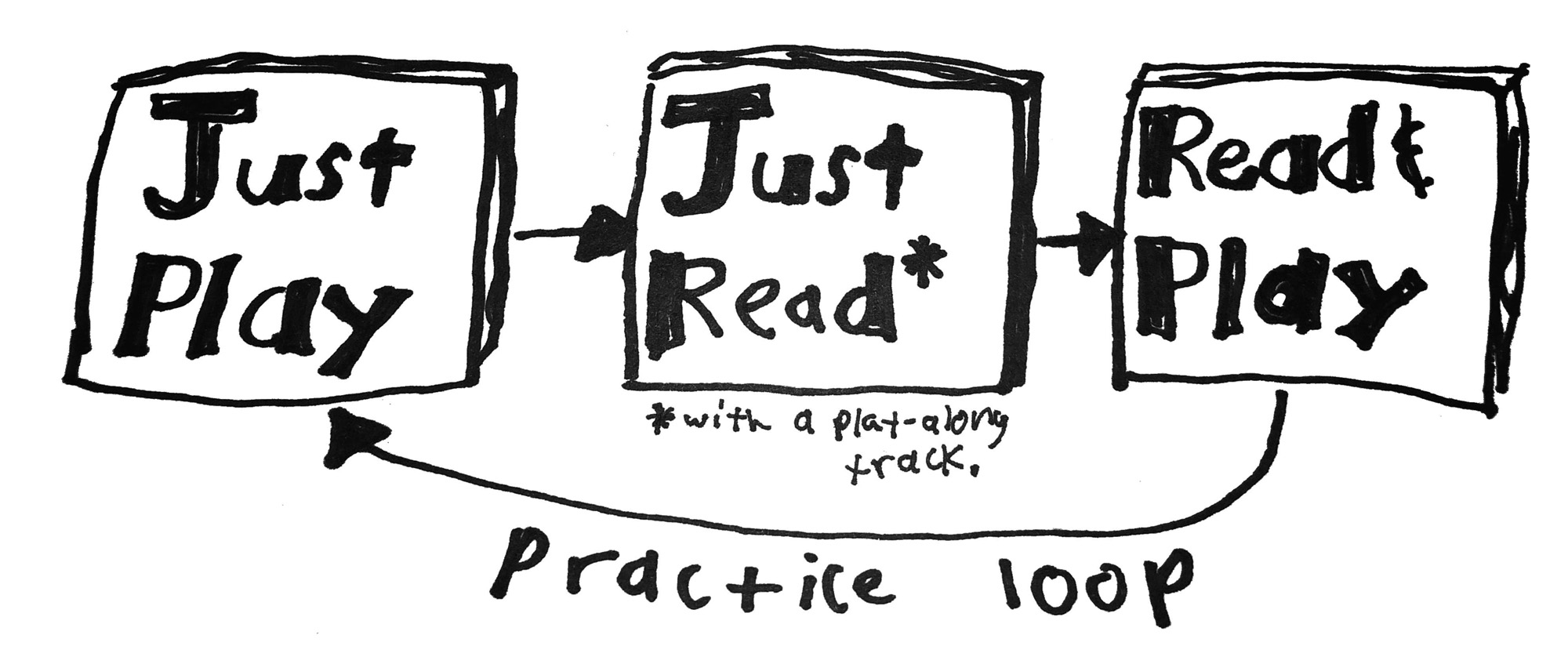
Let’s start with something easy
Step 1: Play a phrase without reading.
Play D0-0-1-1 on the fiddle. Play it until it flows easily. Try not to look at your fingers; close your eyes or look away.
D0-0-1-1
Step 2: Read it without playing.
Now just read with this sheet music video:
Now, try to listen to the play-along track and read the notes.

Step 3: Play it while reading the sheet music snippet.
Now instead of just reading and listening, try to play along with the track while reading. Keep your eyes on the sheet music snippet. If you’re feeling adventurous, do this without the play-along track.
Reset!
Go back to the first step of just playing. This is important. When you start learning to read, your posture and sound will probably get worse.
After teaching for almost twenty-five years, I’ve seen this happen over and over…and not just with note-reading. Any time a student is learning something challenging, their sound gets worse. It’s to be expected, so don’t worry about it.
But…if you return to doing something more simple, it allows your body and mind to reset and re-center. In this case, we return to simply playing the phrase without reading. This is an easier task. Once you do this, you’re ready for the more challenging task of playing and reading at the same time. This is the general principle of a Practice Loop.
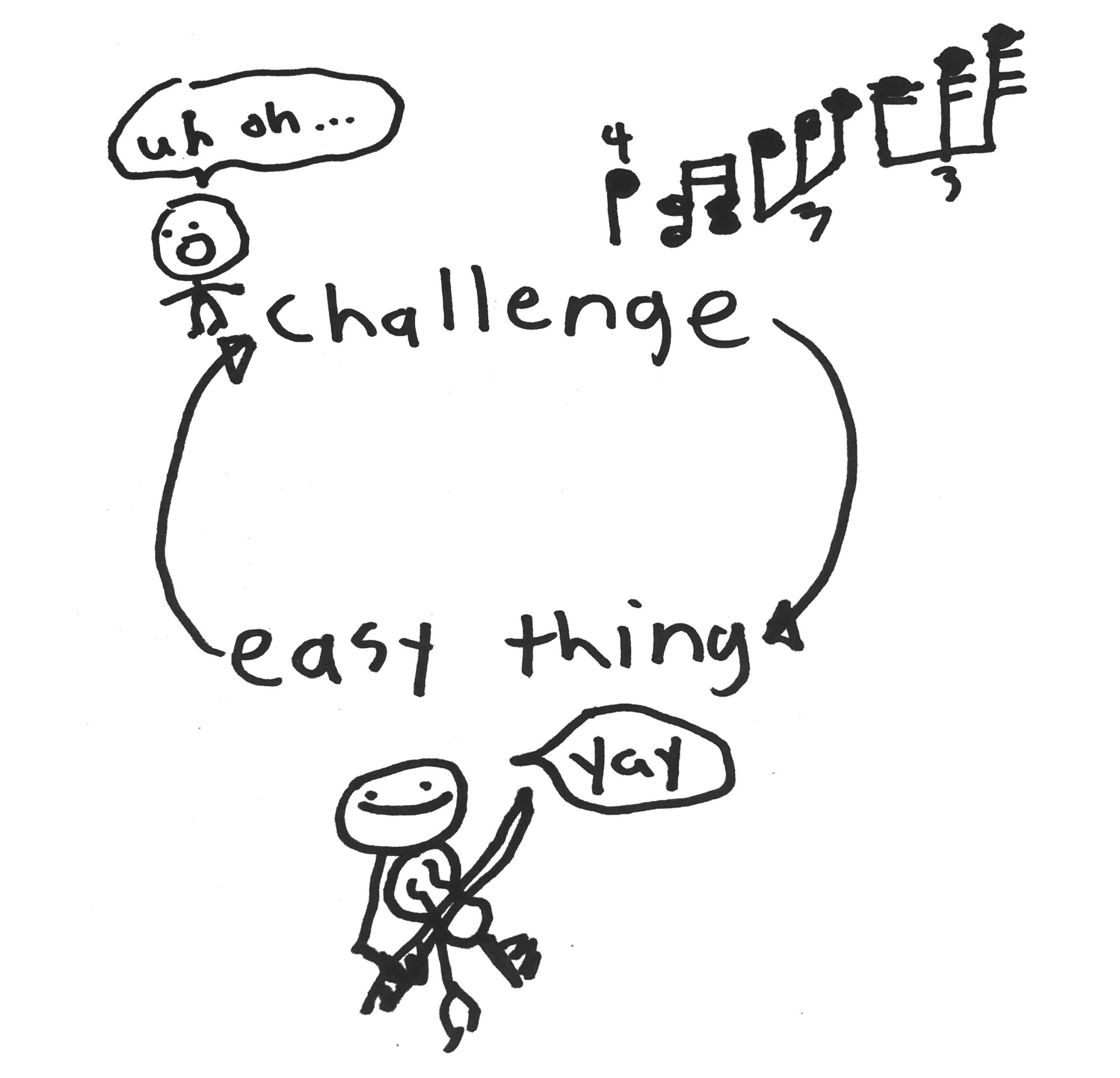
That’s it!
You can practice this process with any of the play-along tracks on FiddleHed! In the sections below, we’ll just work through some more examples using the same INR process.
There are two essential principles of INR:
- Practice with audio and sheet music that match up precisely.
- Practice with small snippets (single bars or quarters of tunes) rather than full tunes.
If you get lost (which will happen at some point), just pause and once more practice the phrase without reading. This is a key step.
Don’t worry if note-reading doesn’t sink in right away. Remember this suggestion: do a little bit of note-reading every day, then let it go.
If you just keep doing the practice, your brain will start to make sense of the written notes. Remember to be kind to yourself as you learn this challenging new thing.
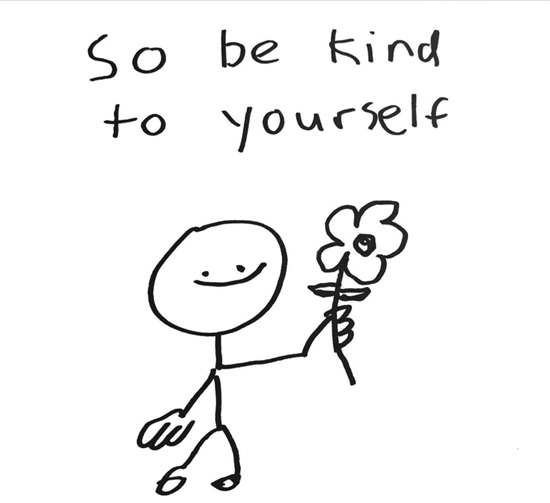
Further practice
Let’s try INR with another simple phrase.
- Play a phrase without reading.
- Read it without playing.
- Play it while reading the sheet music snippet.
D0-0-1-1-2-2-3-3, two bows

Start with what you know
I recommend reviewing the first lessons you took and practicing INR with those exercises.
You can also browse through Interval Central and practice INR with any of those exercises that you’ve already learned:
A0-0-D3-3

Next, read tunes you already know
Now let’s learn to read simple tunes you already know. As an example, we’ll use the song “Bile ’em Cabbage Down.”
First quarter: D2-2-2-2 3 3

If you don’t already know this tune, then just follow along so you can see how the process works. Then try INR on a simple tune that you do know. For now, do the practice along with a play-along track.
- Play the phrase without reading.
- I highly recommend you start with a small phrase like this rather than the whole tune.
- Read it without playing.
- Play it while reading the sheet music snippet.
- Keep alternating these three steps.
Does this make sense? If not, please ask a question in the comments field below.
Once you start to get the hang of reading the first quarter, you can learn to read the second quarter of the tune. I won’t give you the tabs this time.

Use the same INR process.
Now let’s read the third quarter.

Does it look familiar? It is exactly the same phrase as the first quarter. Learning to recognize repeating phrases will help you to read sheet music more easily. It lightens the workload for your brain.
Learn more in this lesson: Finding patterns in sheet music (coming soon).
Now let’s read the fourth quarter, again without tabs.

Reading the whole tune
Once you’ve practiced reading each quarter, you’re ready to read the whole tune using the same process of Intuitive Note-Reading. Start by watching this sheet music video:
Further practice
Awwwwwwwsome. I suggest practicing INR on some easy and familiar tunes:
These are lessons on how to play the tunes. Just use the same INR process you practiced in this lesson. I also placed sheet music videos in these lessons.
Questions?
You’ll probably have some questions about music notation as you practice intuitive note-reading. I want you to take note of them, and then let them go for the time being.
I’m pretty sure your questions will be answered if you just continue to learn and practice note reading. What but what I want you to do in this lesson, is to more focus on learning to recognize the visual patterns of music and how it relates to what you hear and play.

Remember to sound good
I want to close the lesson with this important reminder. After you’ve practiced note-reading, return to just playing some easy tunes without reading.
In other words, end on a high note.
Maybe you’re thinking, “I really should learn how to read, or else I’ll never get to the next level.” I always recommend that you make it a priority to just get a good sound.
If you’re still struggling to get a good sound, play in tune or make it through songs, then I recommend either taking a break from note-reading or holding off on learning it until you are more established as a fiddler.
Remember, you want to first learn the tune well. Memorize it and be able to play it with the flow. Then you can use that to learn how to read. It’s like the melody becomes a friend and teacher.
Return to Top of Note-Reading For Fiddlers >>
Return to Fiddle Questions >>
Leave a Reply
You must be logged in to post a comment.


My note reading skills are basic and I’ve struggled with reading and understanding various types of scales, sharps, L2 etc. So now I am going to focus on the Note Reading. I’ve also learned music by trying to memorize whole tunes, without really understanding the learning process. These extremely concise explanations are incredibly helpful to me and I am feeling much better about learning how to relax, breathe and take my time in the learning process. I find the note practice (read the music section, play the music section, play without reading) very helpful.
Thanks for the great lesson! Your presentation is precisely how our brains tie image with a word. Here, with a sound instead of a spoken word….. the language of music! It seems so much easier now. You are a gifted teacher.
*** —-Congratulations on your wedding!!! Many Blessings!
Just read your email. CONGRATULATIONS on getting married tomorrow. I wish the best for you and Mrs. FiddleHed!
Great lesson! I just watched the video following along with you. It makes so much sense the way you explain it, and it IS very clear! I also like the format with your video following the segments of the lesson. Now, to keep practicing it before the next installment.
Will you eventually put this mini-course into one area of the FiddleHed website? i.e. A new heading in The Art of Fiddling or another area?
Like your “enchanted forest”, but you need to “FiddHed” it up like your apartment in SF! 🙂